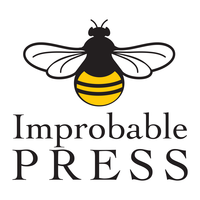When All of This™ first began, I edited a Spark newsletter about working from home. That issue is chocka-block with tips from the experienced and neophyte on Getting Stuff Done when all the doing happens from the dining room table, or a corner of the couch.
The tips were so great that I asked for more and more is what I got, so here, hot of the home presses are a half dozen tips to help you focus even as Fido barks and social media siren songs.
How Do You Work From Home (Some Answers Involve a Tomato and a Dinosaur)?
I don’t think it’s unique to me but complete lock out of all social media, wifi off when connection to network drives aren’t needed, phone for playing instrumental music only and out of reach, and as unstimulating surroundings as possible (bloody impossible at home). It depends on the work though, but if I need to be analytical, that’s what’s needed. Creative work needs a little more cosiness and stimulation, but just as little distraction. To keep myself off YouTube and other media, I use the Freedom app, a paid service but it covers all devices and you can customise lists of what you want to block out. A couple years ago the only site they had trouble blocking was FB but as I don’t use it, I don’t know if they’re still troubled by the evil place. — Jamie Ashbird, A Question of Time
![]()
I have many mugs, many, many, mugs. One of the things I like to do is chose my mug for the day, it kind of sets the mood. I mean, after my breakfast brew, which is always in my big mushroom mug, obviously. So today, for instance, I’m using my “passive aggressive dinosaur” mug, which sets a sassy day. Tomorrow, I might use the one with the periodic table of swearing...watch out. — Janet Anderton, A Question of Time
![]()
So, if there's anything that I've learned so far, it's that trying to stick to a timed schedule (ie, at 10:00 I'll write) is absolutely Not Workable for me right now (and I'm lucky in that it's not required right now either). Similarly, setting concrete goals is also setting myself up for disappointment most days—if it's not one thing, it's another, you know? What seems to be working better is picking three "focus areas" for the day and just working on those in the random blocks of time I get. Trying to keep myself on a strictly timed schedule throws me off my game when the timing is upset, but having goals to work on whenever those random blocks of time occur is a lot easier, especially because I always set the bar really low, and then it's easier to feel accomplished when I go over the bare minimum. And there's something about "write a thousand words" that makes it really difficult for me to start, especially if I'm having an off day, but "put words into that project" is much easier, and once I get started, I'll keep going if it's working for me, and I don't feel as bad if it isn't, because the goal was to start, not to finish. — K. Caine, A Study in Velvet and Leather
![]()
Luckily, I have a studio out back that I can lose myself in. I don't have to worry about clearing anything away and bringing it back out. But to be completely honest, I'm always working on something in the house or studio, or at least thinking about it. I think that's due to just how much I like working on my dioramas and researching/going down rabbit holes to find more stories. — Lee Harper, History Bones
![]()
When I come to a dead end sitting at the computer at my desk and feel like I'm making no headway, I go to the sofa and read fiction for a short while. It shakes up the mental processes and often I feel more productive when I head back. — Tim Richards, Mind the Gap
![]()
I've become a convert of the Pomodoro technique for Getting Stuff Done. Forget technique, this is really just a sensible way to focus without pushing yourself into cranky, headache territory. Basically, it breaks work up into intervals if 25 minutes, with a 3-5 minute break. That's it. That's the technique. To help keep to the intervals, some folks buy pomodoro timers that look like tomatoes because that's what pomodoro means in Italian, and that's what creator Francesco Cirillo used while he was at university. — Wendy C Fries/Atlin Merrick, The Day They Met
